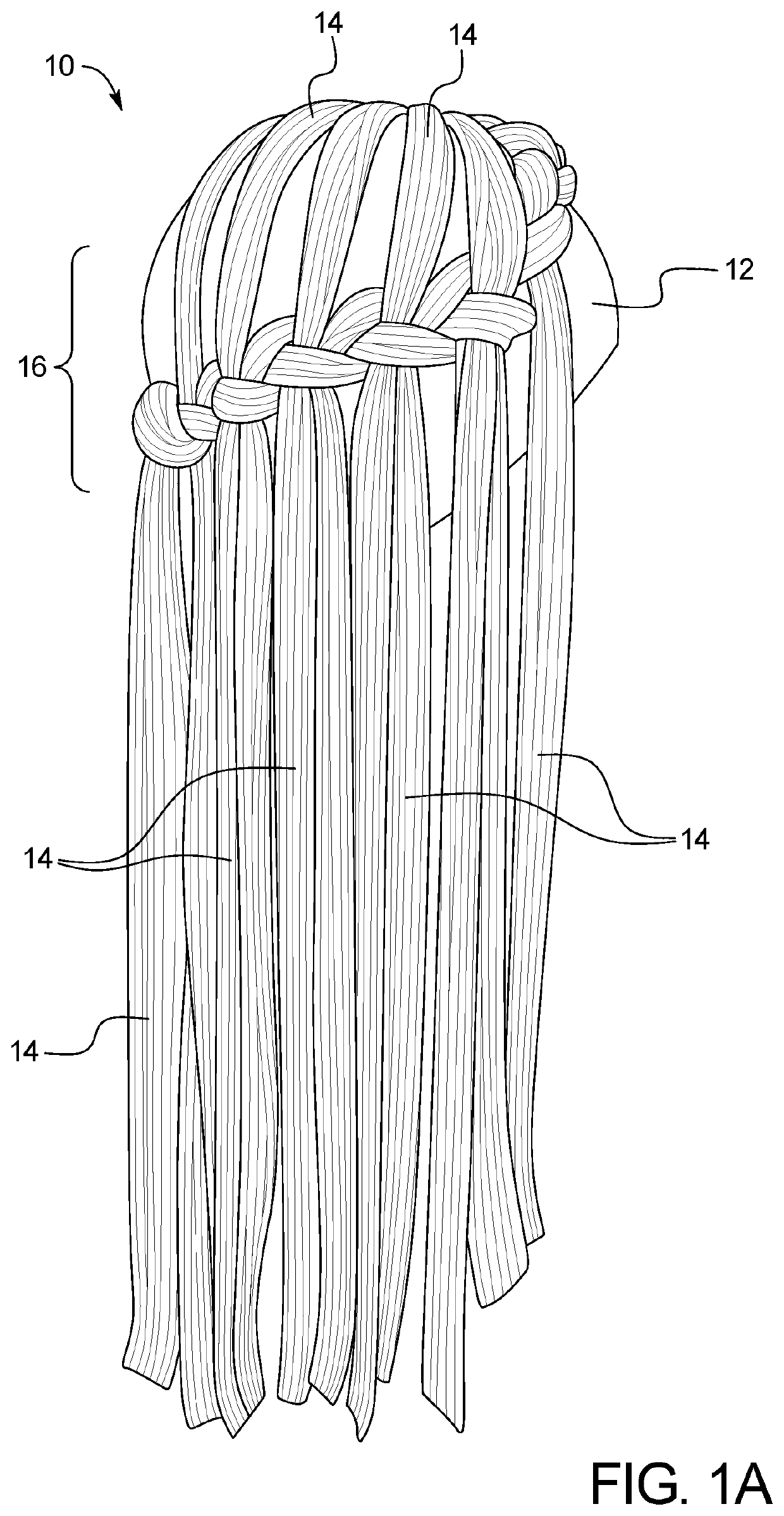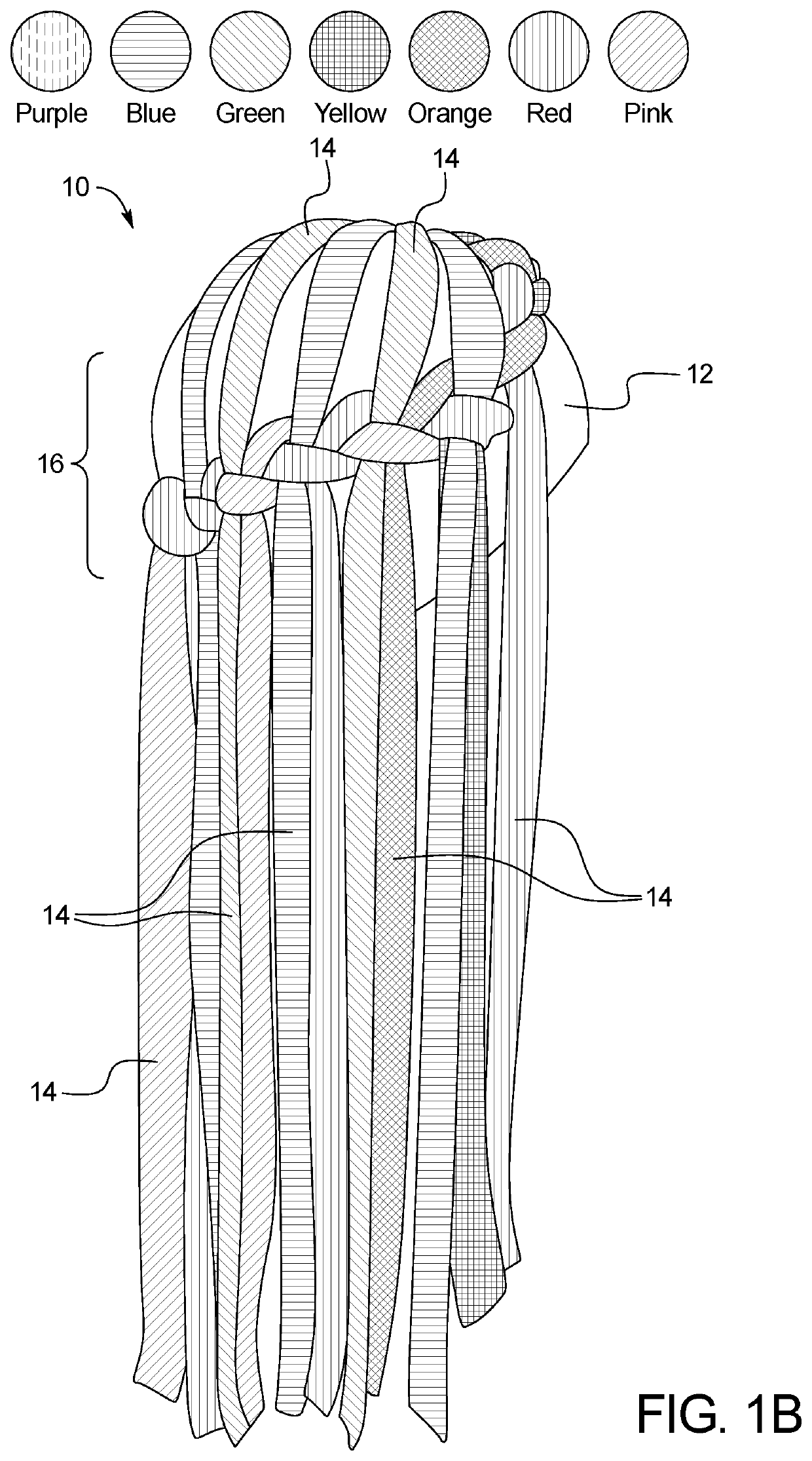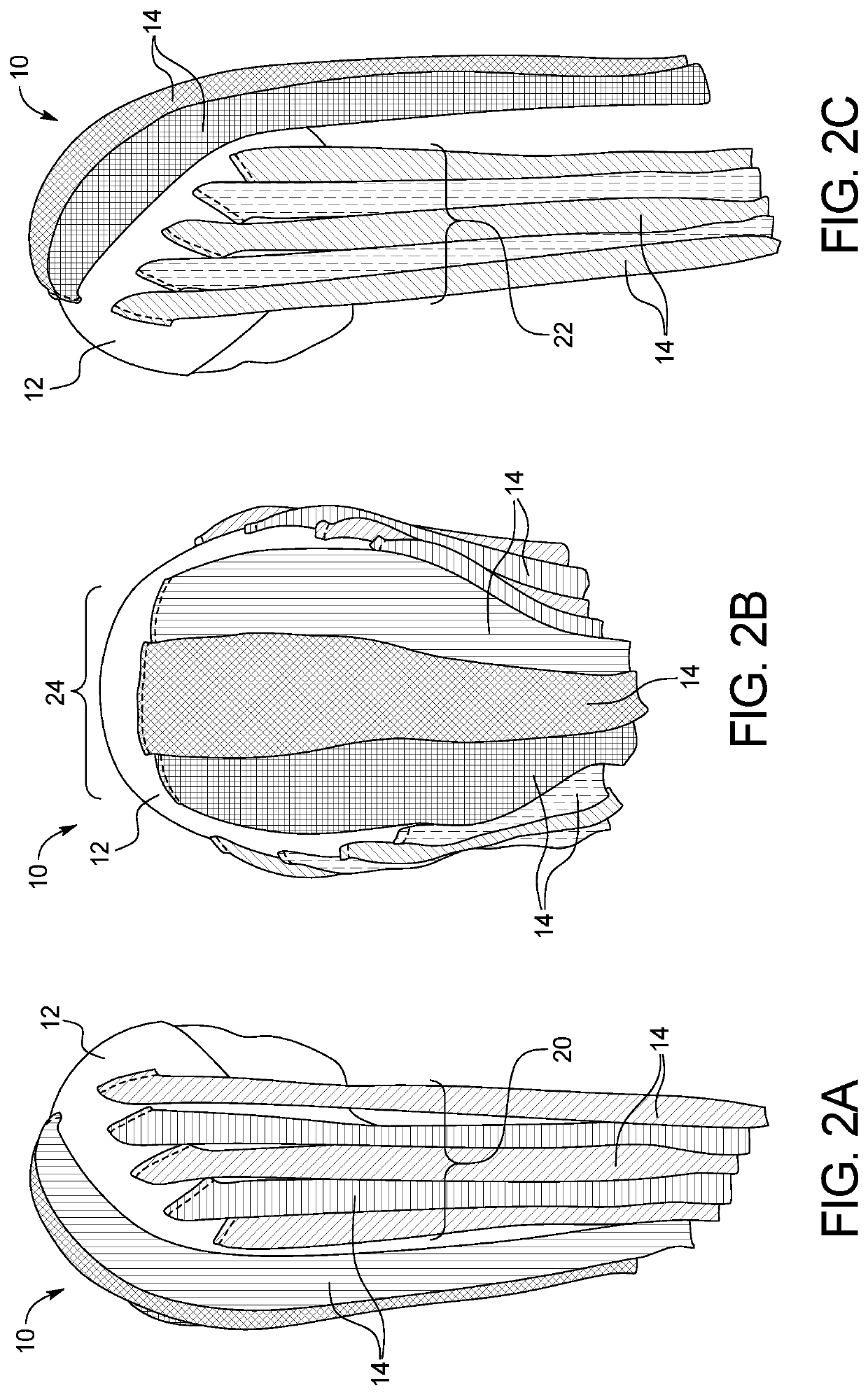Color-coded instructional wigs for teaching braiding techniques
a color-coded, instructional technology, applied in the field of color-coded instructional wigs, can solve the problems of not being well-adapted to optimally teach braiding techniques, many people fail to learn even the most basic braid, etc., and achieve the effect of easy follow
- Summary
- Abstract
- Description
- Claims
- Application Information
AI Technical Summary
Benefits of technology
Problems solved by technology
Method used
Image
Examples
Embodiment Construction
[0026]The present instructional wig system includes a wig having a plurality of color-coded hair segments that can be manipulated into a final braided hair style using a set of corresponding style instructions.
[0027]As shown in FIGS. 1A-1B, a color-coded instructional wig system 10 can include a wig cap 12 (e.g., cap) with a plurality of colored hair segments 14 extending from the outer surface of the wig cap 12. The inner surface of the wig cap 12 can be placed on a mannequin or a person's head. The wig cap 12 can include one or more attachment mechanisms, such as clips, adhesive, snaps, or any other suitable attachment to help hold the wig cap 12 in place on the mannequin or a person's head. Alternatively, or in addition to, the inner surface of the wig cap 12 can be composed of a material (e.g., rubber, other polymeric material) that removeably sticks to the surface of a mannequin head without the use of adhesives or other attachment mechanisms.
[0028]The example shown in FIGS. 1A...
PUM
 Login to View More
Login to View More Abstract
Description
Claims
Application Information
 Login to View More
Login to View More - R&D
- Intellectual Property
- Life Sciences
- Materials
- Tech Scout
- Unparalleled Data Quality
- Higher Quality Content
- 60% Fewer Hallucinations
Browse by: Latest US Patents, China's latest patents, Technical Efficacy Thesaurus, Application Domain, Technology Topic, Popular Technical Reports.
© 2025 PatSnap. All rights reserved.Legal|Privacy policy|Modern Slavery Act Transparency Statement|Sitemap|About US| Contact US: help@patsnap.com



